Green light for light artillery
Marines of the American army are shooting from 105-mm howitzer МХNUMXАЗ in Fort Bragg
For decades, the light artillery system remained one of the main combat assets of the rapid reaction forces of many armies in the world. The time has come for the defense industry to make mature improvements in order to meet modern operational requirements.
Light artillery - based on the 105-mm gun - is a niche opportunity that is often overshadowed by the development of systems in larger caliber 155 mm. Although valued for its mobility, the 105 mm has two major drawbacks - small range and power of action. This is different from the 155-mm systems, which for a long time were the preferred artillery weapons of NATO and most of the ground forces that prefer Western-style weapons.
Only 11 from 28 of NATO countries continue to exploit 105-mm artillery, usually as part of their rapid reaction forces, possibly due to the lack of funds to replace them with more powerful systems. France, Germany and Italy have long standardized their barreled artillery, switching to 155 mm, and use 120-mm heavy mortars when more light weapons are needed to fire from closed positions to support expeditionary and other forces.
Aging
Many 105-mm light artillery systems are now obsolete. For example, the venerable M101 towed howitzer was developed for the American Army by the Rock Island Arsenal (Rock Island Arsenal) as early as the 30s of the last century and during World War II it became the most widespread artillery system in the American army. The M101 was used by the armed forces of at least 55 countries, but in the 80-ies the US Army and Marine Corps were removed from service, although many ground forces left the M101 / M101A1 howitzers either for combat training or because can not afford to replace them with more modern systems.
105 mm howitzer M101 / M101A1
The Canadian Army uses the M101 for training purposes in a modernized version of the NW. For combat use, it has 28 towed light 105-mm / 30 fecal Nexter LG1 Mk II and 33 guns larger lightweight towed 155-mm / 37 howitzer M777A1 from BAE Systems. In order not to use more expensive 155-mm ammunition for training, the army decided in the middle of the 90-x to leave the M101-1 howitzers (under the designation С2) in service with reserve regiments. The company RDM Technology, now no longer existing, has upgraded the 98 2 guns to the NW standard, which is distinguished by a longer caliber 33 barrel, a muzzle brake, reinforced guides and the absence of protective shutters. The maximum range of the M101 / 33 is 19,5 km when firing a high-explosive fragmentation projectile with a bottom notch. Facing the current financial constraints, the army is currently considering the possibility of extending the service of its howitzers NW for another 10 years.
Three CH-47 Chinooks helicopters transport the M119AZ howitzers as part of the combat readiness of divisional artillery to Fort Bragg
Dominant light guns
The market for modern 105-mm artillery for a long time was dominated by two towed systems - 105-mm light gun Light Gun from BAE Systems and LG1 from Nexter. The first was developed in the 1965-1974 years by the British Armaments Research Center to meet the needs of the British army for reliable armament light enough to be transported in the cockpit of an average CH-47 Chinook helicopter and which could fire standard US and NATO M1 ammunition , as well as the British extended range projectile.
Since these two types of projectiles are not interchangeable, it was decided to replace the barrels: in the L118 configuration, the gun fired a British separate-loading projectile; in the L119 configuration, it shoots the M1 semi-unitary ammunition. The first one can reach the range of 17500 meters with a British projectile, which increases to 21000 meters when firing active-projectiles, while the second shoots a standard M1 projectile at a range of 11600 meters and an active-reactive range of 19500 meters.
BAE Systems (then Royal Ordnance Nottingham) began mass production of the L118 cannon for the British Army in 1975. With the closure of the plant in Nottingham, production and technical support were moved to the BAE Systems Weapon Systems plant in Barrow-in-Furness. L118 first took part in the fighting during the Falklands War in 1982, when 30 deployed cannons fired up to 400 projectiles on a cannon per day, mostly with a Supercharge, to achieve maximum range. Later, the L118 cannon was used to support operations in Afghanistan, where it was the only army deployed artillery system, Iraq and the former Yugoslavia. The British Army's L118 guns went through a series of upgrades: from the 1999 onwards, they began installing the laser detection laser targeting system (LINAPS) from Selex and the 2011 display (Sells Display and Control Unit) from the Selex.
The composition of the automatic targeting LINAPS
105-mm Light Gun Light Gun participated in the Falklands 1982 War of the Year (bottom photo)
The L118 cannon is currently in service with four artillery regiments, including the 7 airborne regiment and the 29 sabotage and reconnaissance regiment, which support two rapid-response units — the 16 th airborne brigade and the 3 sabotage and reconnaissance squadron Marine Corps brigades respectively.
Middle support
As part of the restructuring of the Army 2020 Refine, announced in December 2016, the 3 and 4 regiments, armed with Light Gun light guns, will change their combat designation, so that with the 2019, they will provide direct artillery support for two new medium “drums” brigades that will receive the Ajax tracked armored vehicles from General Dynamics UK (currently under development) and the 8x8 infantry armored vehicle of the Mechanized Infantry Vehiclee project (not yet selected). In order to develop the organizational structure and doctrine for these two new brigades, the army will form an experimental SEG strike group (Strike Experimentation Group), which will include three artillery regiments in 2017.
The two regiments will initially consist of a headquarters division, two light divisions with Light Gun cannons and three divisions of tactical groups that will carry out the tasks of advanced fire support groups. SEG's work will have an impact on the development of the army’s requirements for the new medium wheel cannon, which is scheduled to be adopted by 2025. Industry sources suggest that this is likely to be an 155-mm / 52 cal tool, such as the Nexter CAESAR, mounted on the HX 8x8 truck manufactured by Rheinmetall MAN Military Vehicles, which is already operated by the British army.
In accordance with A2020R, the Light Gun will also be put into service with three reserve regiments of direct support, whose main task is to strengthen regular artillery regiments.
More 1600 light guns (including local production) were manufactured for customers from 105 countries, including Australia (local designation Hamel), Bahrain, Botswana, Brazil, Ireland, Kenya, Malawi, Morocco, New Zealand (Hamel), Oman, Portugal, Spain, United Arab Emirates, United States and the United Kingdom.
After the Australian Army replaced its L119 Hamel 155-mm M777 cannons in 2010-2015 years, BAE Systems bought Hamel 92 units and “refreshed” them to offer new customers. At the Eurosatory 2016 exhibition, representatives of the company said that this gun would arouse the interest of the armies of Latin America and the Middle East, seeking to get a proven and inexpensive 105-mm artillery system.
New Zealand intends to leave the Hamel guns, which are armed with two divisions of the 16 regiment, for some time. The government’s defense plan, published in November 2016, states: "Light 105-mm guns will be replaced by a system that can work with current radio stations, and radio stations that will be supplied under the Network Enabled Army digitization program."
Seeing the potential
Impressed by the light guns of the British Army Light Gun during the Falklands war, particularly the helicopter suspension, the US Army bought several L119 cannons to evaluate and possibly replace the local-made 105 mm howitzers equipped with light divisions, including the 102- xu and xnumx airborne divisions. Subsequently, the army acquired 82 guns directly from the company BAE Systems, and in 101, licensed production began at the Rock Island Arsenal and Watervliet Arsenal factories.
Received the designation М119А1, the American gun differs in several elements, including the cold climate nakatnik, allowing it to operate at temperatures up to -45 ° С and requiring minimal maintenance, a more durable sight, and modified brakes that allow the HMMWV to be towed by a gun. The first system was retrofitted in December 1989.
The M119 cannon was widely used in Afghanistan and Iraq, and the production of the M119А2 variant with an improved scope was resumed in 2007 to replace the M102 howitzers remaining in service with the National Guard. More than 800 M119 guns were manufactured for the American army and some more for foreign customers, including Morocco and Saudi Arabia. Currently, the M119 is in service with the army and infantry fighting brigades of the IBCT, including the 10 mountain division, the 82 and 101 airborne divisions, and the 173 airborne brigade group.
In 2013, the army reorganized the artillery battalions in the IBCT brigades. Two batteries of eight guns M119 in three batteries: two batteries of six guns M119 and the third battery six guns M777A2. The M777А2 cannons should provide high-precision fire when firing a high-precision M155 Excalibur 982-mm projectile from BAE Systems / Raytheon X-gun and standard ammunition equipped with Orbital ATX M1156 Precision Guidance Kit.
The army did not allocate funding for the development of high-precision projectile for the gun M119, but continues to upgrade the system itself. In April 2015, the 3 Division of the 82 Division became the first operating unit to receive the new M119AZ digital guns, in which the GPS / inertial guidance unit was installed; approximately 90% of the software volume for it was taken from the M777А2 gun. The army plans to upgrade all its guns M119А2 to the standard A3.
The upgrade also includes a new IVI20 breech and a new retractable system designed to make the howitzer safer, simpler and more reliable, and reduce the cost of the entire system.
“Several reports from Afghanistan regarding the high service levels of the M119-X2 roll-off system forced the towed artillery systems program department to begin upgrading,” said the head of the department at Picatinny Arsenal. - With the participation of SIC Armament, Armored Office and the Center for joint production and technology, the department began work to address the shortcomings described in these reports. As a result, our soldiers got a safer and more reliable howitzer. "
The M119-2 rolling system consists of 124 parts and costs about 60000 dollars, while the modified sliding system costing 40000 dollars consists of all 75 parts - 47 from the existing system and 28 of new components.
Light gun HAWKEYE
AM General started marketing the Hawkeye Mobile Weapon System (2016MWS) 105-mm mobile weapon system in 105 for the first time at the AUSA show in October of the same year. AM General describes the Hawkeye 105MWS as "the lightest and most maneuverable self-propelled howitzer in the world."
The Hawkeye Weapon System, an artillery unit with low recoil forces developed by Mandus Group, is installed on the HMMWV M1152A1w / B2 4x4 chassis. For Hawkeye, the same 105-mm / ZZ cal instrument M20, as in the current howitzer М119, and installed on a light cradle. Four hydraulic stabilizers, two in front and two in the back of the platform, provide platform stability. The horizontal guidance drive allows you to rotate the implement 90 degrees left and right at vertical guidance angles from -5 ° to + 72 °. In addition to direct and indirect aiming optical sighting systems, the 105MWS gun is equipped with MG9000 digital fire control and guidance system, which includes Northrop Grumman inertial navigation system LN-270, GPS, Weibul Scientific initial velocity radar and Mandus gun display unit.
The 105MWS cannon can fire with all types of 105-mm ammunition in service with the US Army, including M1 and M760 projectiles, M60 / M60A2 smoke, fragmentation-explosive (RP) MNNXX active, reactive, active, reactive, active, reactive M193, CX, NUMX, fragmentation-high-explosive (RP) MNNXX active-reactive M314, lighting systems, and for example 1130MWS is serviced by four people, although in extreme situations two people can handle it. A rate of fire of up to eight rounds per minute can be achieved.
Hawkeye offers potential customers a combination of strategic deployability and tactical mobility, which in combination with a digital SLA allows Hawkeye to quickly change positions in order to avoid counter-battery fire.
105-mm mobile weapon system Hawkeye Mobile Weapon System
Следующий шаг
Unlike the 105-mm Light Gun, which was designed to meet national needs, Nexter developed the LG105 1-mm howitzer specifically for the export market and the obvious needs of rapidly deployable units.
LG1 can be towed by any lightweight all-terrain vehicle or transported on a light helicopter suspension, four guns can be transported by military transport aircraft C-130. Singapore became the launch customer for the LG1 Mk I gun in 1990 of the year, ordering 37 systems after conducting a comparative evaluation of the LG1 and Light Gun. An improved version of the LG1 Mk II was bought by Belgium (14 cannons), Canada (28), Indonesia (20) and Thailand (24 army and 30 marines). The Singapore Army has decommissioned its LG1 guns after purchasing the 2005-mm Light Weight Howitzer light howitzer from ST Kinetics Pegasus in 155 year.
The current serial version of the standard LG1 Mk III is completely digital, equipped with a ballistic computer and can be integrated with various systems of operational management of artillery. The gun has an 105-mm barrel with a 30 long caliber, which fires Nexter ERG3 ammunition at a distance of more than 17000 meters and is compatible with standard M1 ammunition. Colombia became the launch customer for the LG1 Mk III gun, receiving 20 systems in the 2009-2010 years. In December 2015, the army launched a project to install the LG1 Mk III on a M923A2 6x6 truck to provide the army with the first self-propelled artillery system. The current demand is only six systems to equip one battery.
Nexter LG1 howitzers battery
Long Range 105 mm
At the moment, Denel Land Systems (DLS) is the only company that has begun work aimed at increasing the range and fire power of existing 105-mm artillery weapons. Using a systematic approach, DLS in the 1995 year began the development of a light experimental 105-mm / 58 LEO (Light Experimental Ordnance) artillery gun and the corresponding projectiles and charges. The company took up this job while awaiting the South African Army’s 105-mm gun requirements, which in terms of range and firepower could be compared to lightweight towed 155-mm guns, such as the M777 and Pegasus (at that time still in development).
The first 105 mm LEO prototype was manufactured in 2001, after which it underwent extensive testing. It can fire standard ammunition 24,6 km, which increases to 29,3 km with a projectile with a bottom notch or 36 km when shooting VLRAP (Velocity-enhanced Long-Range Artillery Projectile - long-range missile projectile with increased speed) from Rheinmetall Denel Munition. The first LEO prototype weighed 3800 kg, although Denel is confident that it can reduce weight to 2500 kg and even offer an ultralight version weighing about 2000 kg.
In order to increase the market appeal of the LEO 105-mm cannon, DLS developed the T7 light turret system for installation on the LAV III 8x8 armored vehicle manufactured by General Dynamics Land Systems. The American company hoped that the US Army would wish to equip its Stryker brigades with a self-propelled howitzer mounted on the LAV Ill / Stryker chassis, but the army chose the M777 gun to equip the brigades. Denel has developed a new conceptual 105-mm turret, an updated version of the Т7 system, which will be installed on such 25-ton platforms, such as Patria AMV 8x8, a modified version of which Denel is currently producing for the South African army.
Denel continues to market its G7 howitzer, as the 105-mm LEO towed version is now well known. A company spokesman said: “Developing and promoting an 105-mm artillery system these days is very difficult because of financial constraints and design priorities. Denel is currently looking for a financial sponsor, and we will definitely respond to the demand of the South African armed forces with a new field gun. ”
New Turkish gun
Turkey is one of the few countries and the only member of NATO to produce a new 105-mm artillery system. The state-owned enterprise MKEK (Makina ve Kimya Endustrisi Kurumu) together with Aselsan developed the Boran cannon to meet the needs of the Turkish armed forces in air transport light towed howitzer, which should replace approximately M75А101 1 howitzers still in service.
MKEK has developed two different Vogan 105-mm prototypes: one for Turkish requirements and one for the export market; both of them were shown for the first time at the IDEF 2015 exhibition in Istanbul. Both versions have a tool of 30 length of calibers, a breech of a vertically falling type, a hydropneumatic recoil system and a three-chamber muzzle brake. The design for the Turkish army is different arcuate carriage, similar to the 105-mm Light Gun, while the export version has a more common trunk with sliding beds like the M101 and LG1 guns.
The 105-mm Vogue is equipped with the NTSSO fire control system (Havadan Ta§mabilir Hafif Cekili Obus) developed by Aselsan, which includes seven main components: a fire control computer; control unit and video images; inertial navigation system Ataletsel; radar speed measurement; laser rangefinder; power plant; and digital radio station. The system is optimized for airborne transport. When firing a MKEC projectile with a bottom notch, the Vogan can achieve maximum 17000 meter range — an increase of more than 50% compared to the МХNUMX cannon firing with the standard МNNXX OB. Experienced calculation can achieve a rate of six rounds per minute.
The tests and qualifications of 105-mm Vogues were completed in August of the 2016 year, and mass production of 106 systems will begin in the 2017 year.
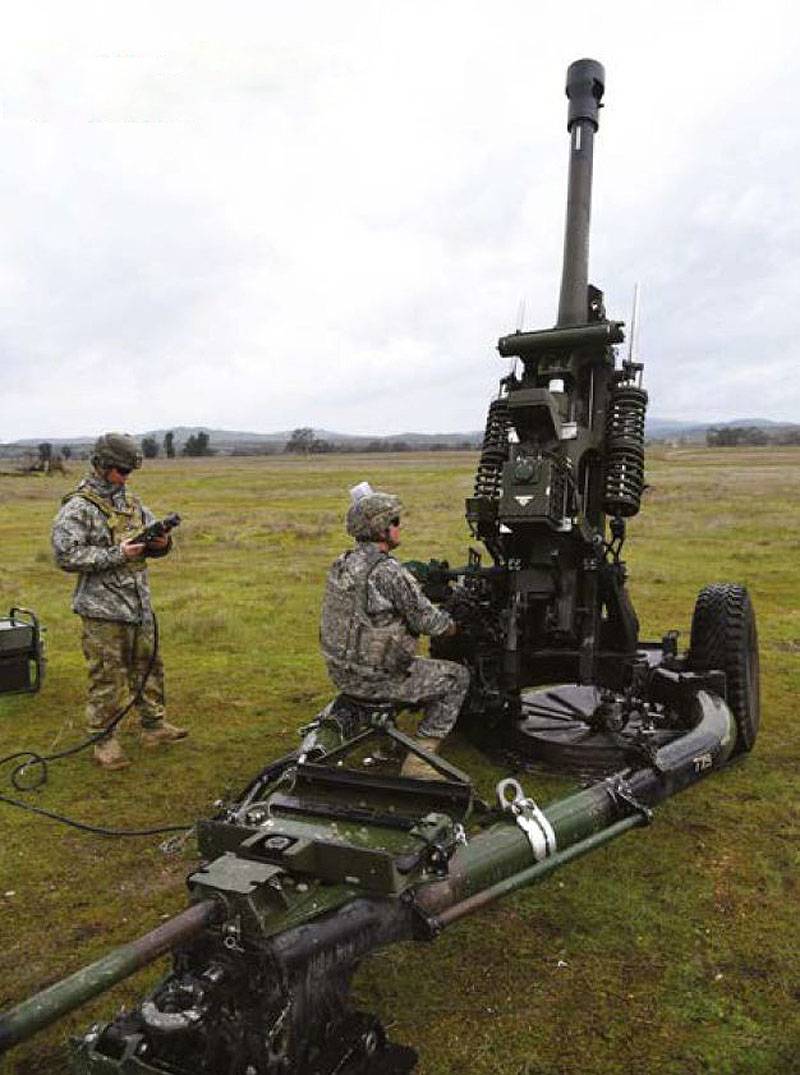
American soldiers are preparing for the fire tests of the gun M119AZ, equipped with new recoil devices
More mobility
The army of South Korea is armed with 1700 towed 105-mm howitzers, which are a mixture of American M101 guns and locally produced KN178 guns. In the development of the South Korean company WIA, an upgraded KN178, the original 105-mm barrel was replaced with a longer barrel of CN78 38 caliber with a dual-cam muzzle brake, and a new rollback mechanism RM78 and a new fire control system were installed. The CG78 carriage has also been reinforced. The KN178 cannon can fire with M1 OB-shells at a distance of 14700 meters when using a M200 propellant charge and at a distance of 18000 meters with an MXXUMX active-missile projectile. The weight of the KN548 cannon is about the same as that of the M178, 101 kg, and, as a rule, it is towed by the 2650 ton truck 2,5x6.
Production of guns began in 1984, but neither the company nor the army disclosed the number of M101 guns converted to the KH178 configuration. WIA reportedly sold enough KN178 Indonesia cannons to arm three artillery battalions (each with 18 guns), as well as a battery of cannons in Chile, and continues to promote its KN178 today.
Due to the high cost of replacing 105-mm artillery systems and large ammunition stocks, the South Korean army intends to keep M101 / KH178 in service for many more years, although it plans to increase the combat effectiveness of these systems.
Promotional video of the South Korean self-propelled howitzer EVO-105 with Russian subtitles
In order to meet the need for increased mobility, Hanwha Techwin developed the EVO-105 Evolved Wheeled Self-Propelled Howitzer wheeled self-propelled howitzer, first presented as a demonstration model at the beginning of the 2014 year. In fact, this is the artillery part of the M101, mounted on the chassis of a five-ton truck KM500 6x6. The M101 cannon with modified pointing drives is mounted on a turntable at the rear of the truck. The EVO-105 howitzer is equipped with a computerized LMS (based on the LMS installed on the 155-mm / 52 crawler track gauge K9 also manufactured by Hanwha Techwin) connected to an automatic gun guidance system.
The joystick allows the gunner to direct a gun using electric drives, while the possibility of manual guidance is provided. The turntable allows the gun to be rotated 90 ° to the right and left, the vertical guidance angles range from -5 ° to + 65 °.
The South Korean army expects to order up to 800 systems, although serial units are likely to be installed on a more modern chassis. Hanwha Techwin, with an eye to the export market and its army, offered a number of potential upgrades, including the installation of the KN178 artillery unit on the new 6xXNNXX chassis, which would allow an armored cabin to be installed to protect the crew in motion. The company also offered to install larger weapons, such as its own 6-mm KH155 or towed 179-mm howitzer М130 of Soviet times, on the 46x8 chassis.
Korean 155-mm howitzer KH179
Philippines Procurement
The Philippine Army, which is armed with 204 105-mm towed howitzers (of which around 140 M101), but without self-propelled artillery, reportedly became interested in the new EVO-105 howitzer. For the army, always constrained by the means, such a project has an obvious appeal. In 1997, Nexter upgraded the Philippine 12 systems to the M101 / 30 configuration, replacing the original barrels with a barrel that was previously installed in the LG1 Mk II guns.
The park of artillery systems of the Jordanian army consists of 54 American M102 howitzers. At the SOFEX 2014 exhibition, the Jordanian King Abdullah II Design and Development Bureau (KADDB) presented its 105 Mounted Gun Platform (105 MGP) gun platform for the first time. The M102 cannon part on the turntable was installed on a DAF 4440 4x4 truck, which was equipped with electro-hydraulic supports to stabilize the platform.
The gun can rotate right and left on the 45 ° along the rear arc, the vertical guidance angles are -5 ° / + 75 °. Immediately behind the unprotected cab is a stacking of 36 shots. Although in the American army, the M2 was serviced by a calculation from 8 people, KADDB states that the calculation of their three people, including the driver, will be able to serve the 105 MGP howitzer. It is possible that this weapon system is designed to meet the long-standing needs of Jordanian special forces in the 105-mm howitzer on the chassis of a truck.
Materials used:
www.shephardmedia.com
www.nexter-group.fr
www.baesystems.com
www.generaldynamics.uk.com
www.amgeneral.com
www.denellandsystems.co.za
www.mkek.gov.tr
www.hanwhatechwin.com
www.kaddb.com
www.wikipedia.org
en.wikipedia.org
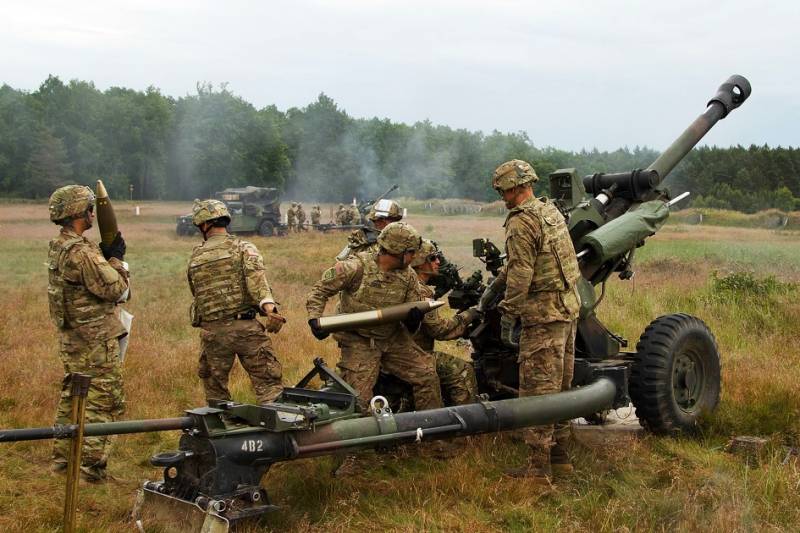
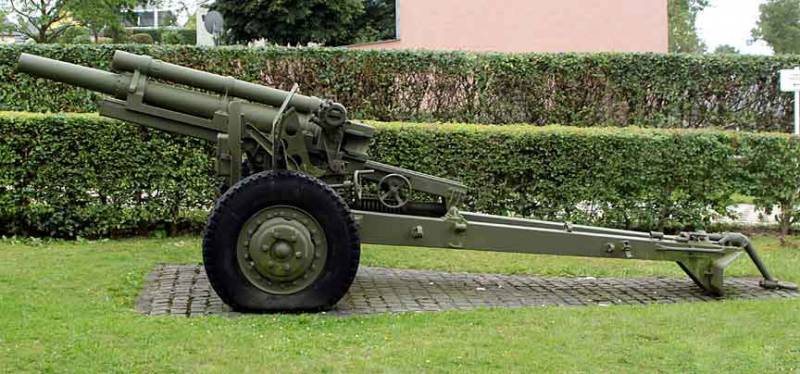
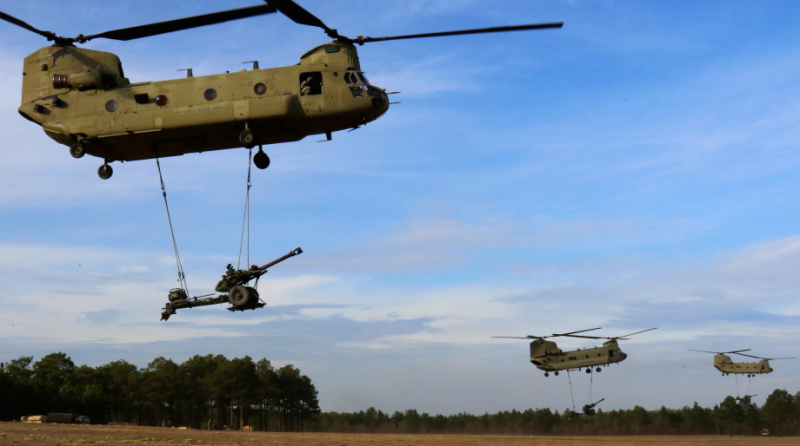
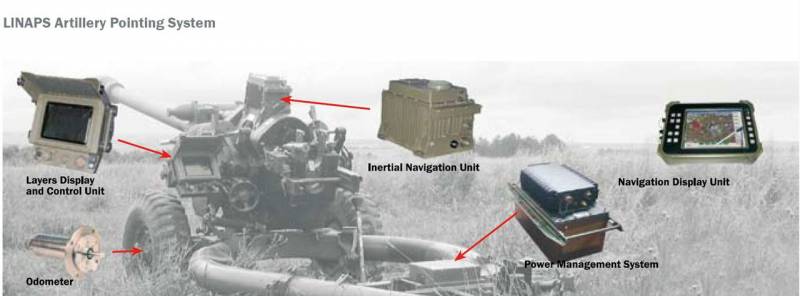
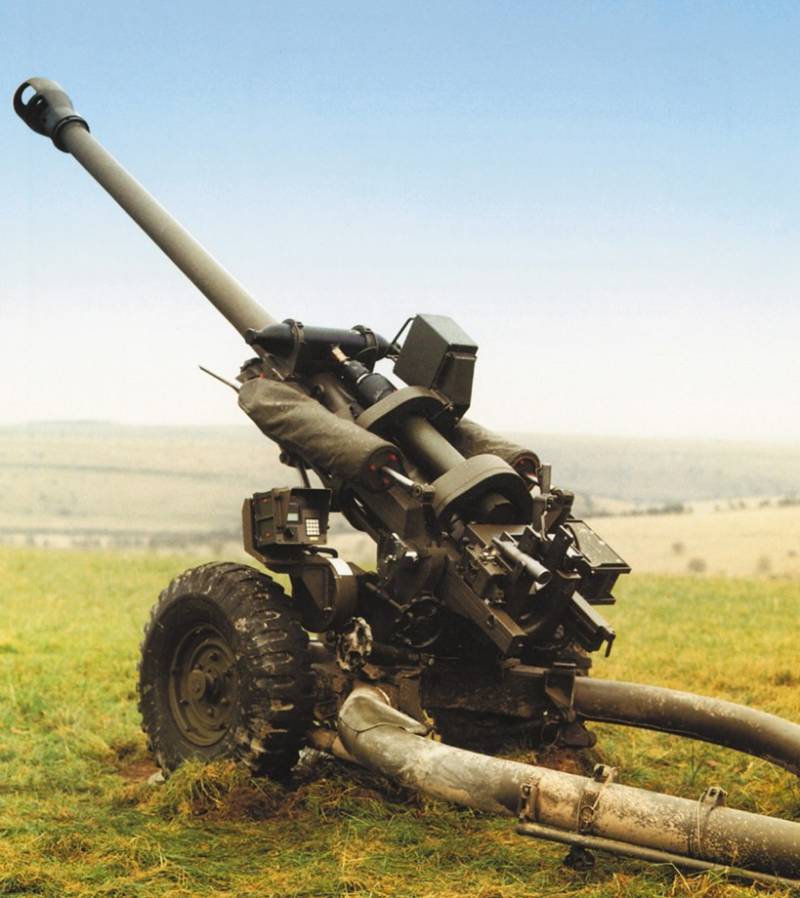
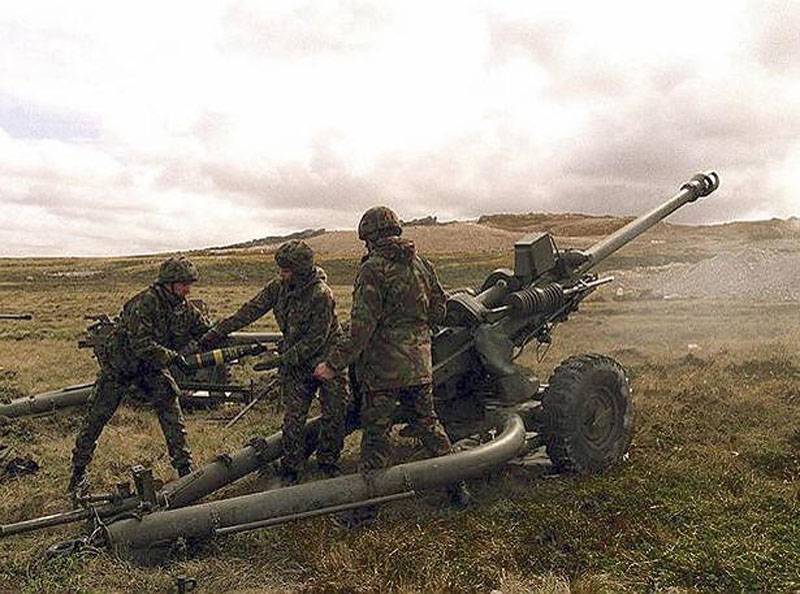
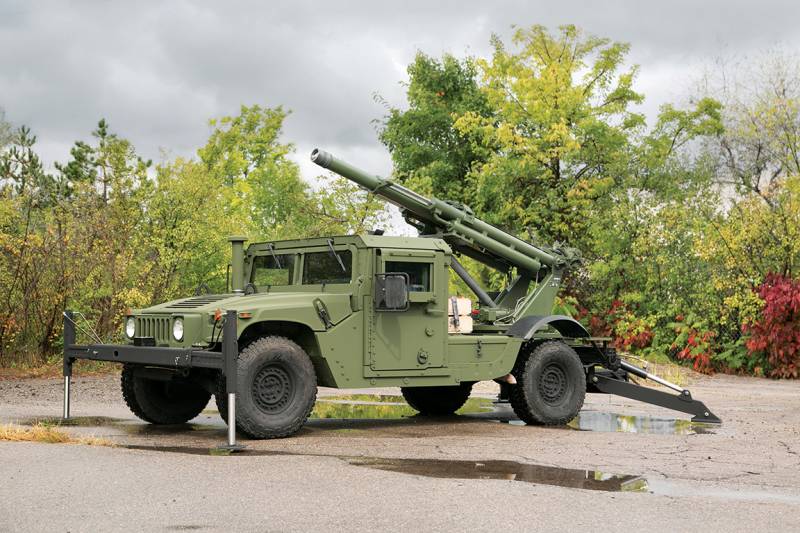
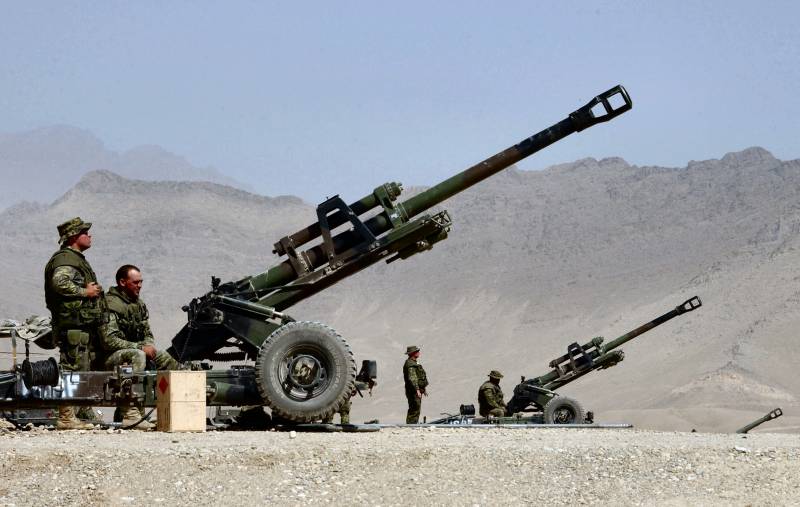
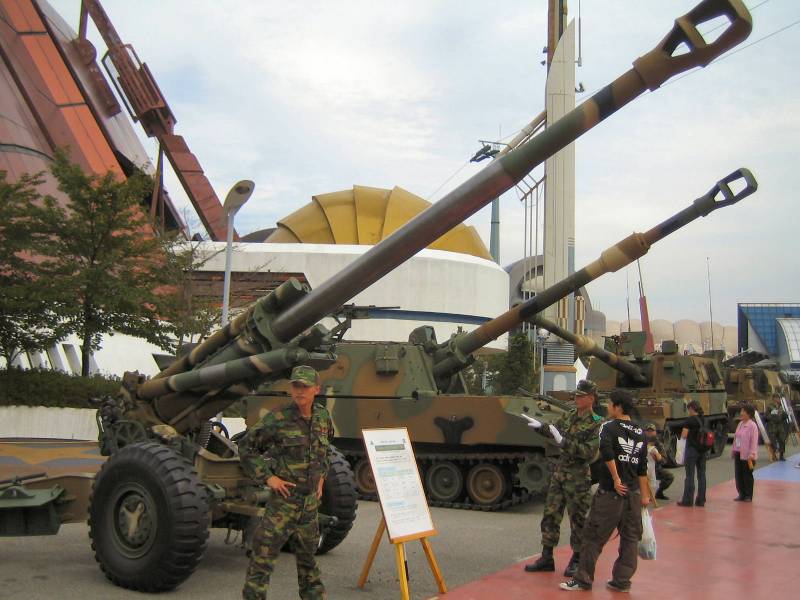
Information